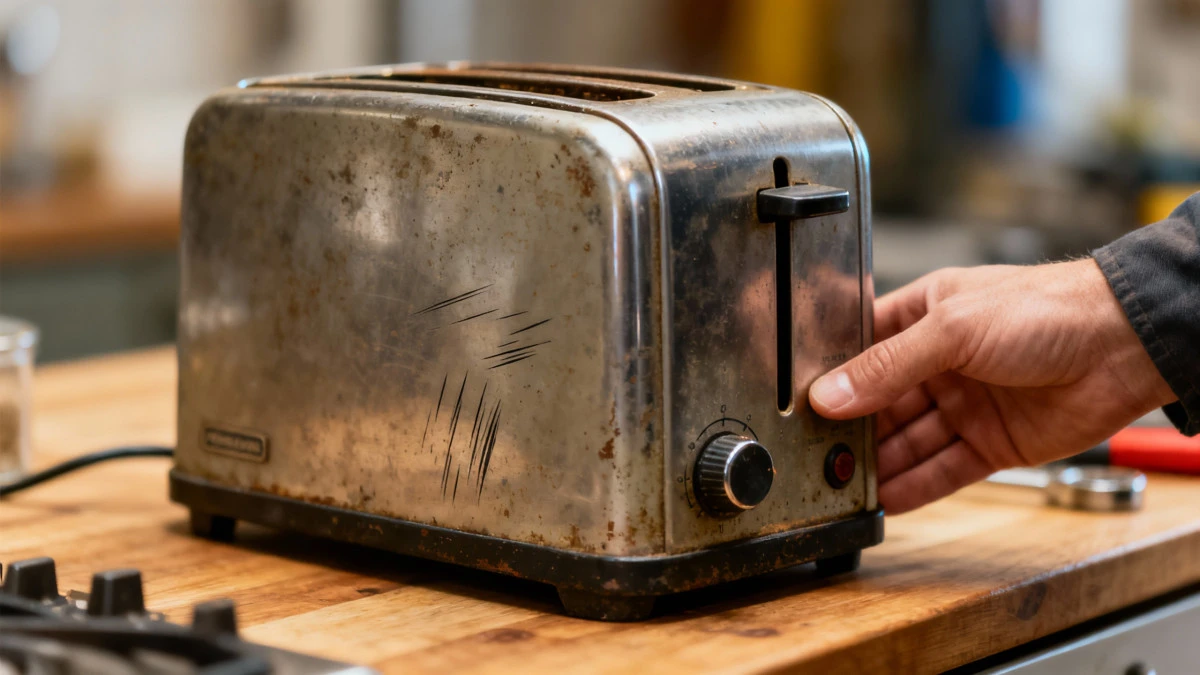The Myth and Reality of Planned Obsolescence
Planned obsolescence is often described as manufacturers deliberately shortening the lifespan of appliances. But the truth? It’s more complex, and varies a lot depending on the product. One thing is clear: the rise of smart devices and frequent software updates, especially since the heyday of sturdy all-mechanical machines in the 1980s, has made some appliances feel more fragile nowadays.
There are major differences depending on the type of product and the brand. Let’s be honest—we’ve all been through the heartbreak of a phone that seems to die barely two years into its life. Software updates that slow it down, batteries that run out before your coffee’s even brewed, plus the irresistible urge to try the latest model… The average smartphone lives around two years. Computers aren’t much better, averaging between two and a half to five years.
But for major home appliances, there’s good news: as long as you choose wisely, their longevity hasn’t budged much. In the rush to offer bargain-basement prices, some manufacturers and retailers have cut corners on quality and durability. Yet according to consumer advocacy groups like UFC Que Choisir and 60 Millions de Consommateurs (France’s counterparts to Consumer Reports and Which?), as well as the anti-obsolescence group Halte à l’Obsolescence Programmée, the most reliable brands haven’t changed: washing machines typically last around 10 years, and refrigerators, 11 years on average. So yes, you can still find large appliances that unite efficiency and durability.
Changing Tech—and Changing Habits
Don’t forget, though, that technology evolves and so do we. The shift from analog to digital TV in many countries pushed people to swap out old sets—sometimes even when they were still working. In a joint study by Ademe (France’s Agency for Ecological Transition) and GIFAM (the professional association for appliance manufacturers), it turns out that half the appliances people replace are still in working order. People usually swap them out for two reasons:
- The hassle of repairing them (that’s on the manufacturer)
- The lure of shiny new features or wanting something that fits their needs better (that’s on us as consumers)
Interestingly, Ademe also notes that bringing in more modern, energy-efficient appliances has halved yearly household energy consumption over the past 20 years. Back then, appliances made up 46% of a home’s energy bill—it’s just 23% today.
How to Dodge Obsolescence: Pro Strategies
To avoid appliance obsolescence, start by clearly identifying your needs. This will help you choose the right model for your situation. The size and power of your fridge will vary greatly depending on whether it’s for a big family, a single person, or just a backup unit. The same goes for washing machines: if you use it almost daily, skip the cheapest models and look for one with a large capacity. And when confronted with the temptation of new features? Be strong—resist!
Since most people keep their large appliances for about a decade, it’s worth choosing wisely. Don’t fall for flash sales or slick sales pitches. Take the time to research on specialist sites, especially those from consumer protection organizations—these are always coming out with new comparative studies.
Best Practices for a Long Appliance Life
Hands up: who actually reads the user manual before firing up a brand-new appliance? Practically no one! But the manufacturer includes these for good reason—they’re filled with tips for proper use.
- Washing machines: During installation, make sure the machine sits flat and stable on the floor to absorb vibrations when spinning and prevent premature wear.
- Pay special attention to the drain filter and the drum. Empty your pockets! Bits of paper will clog the filter and coins, pebbles, or other surprises can get stuck between the tank and the drum, causing damage. And don’t overfill the machine; stick to its capacity.
- Between washes, leave the door or lid open so any leftover moisture can escape—and prevent those ‘mystery’ smells.
- Dishwashers: Scrape off food scraps and solids before loading, to prevent the filter from clogging, which could block the drain pump. The filter should also be cleaned by hand regularly. Make sure the spray arms don’t hit plates or saucepans; these parts are usually easy to replace if broken.
- Refrigerators: The most common problems are doors not closing properly, worn seals, overstuffing the refrigerator (if it’s filled far beyond its real capacity), placing it right next to a heat source (like a stove or oven), and opening the door too often.
Finally, whenever you can, repair your appliances! You can try it yourself at home, call a professional, or head to a Repair Café (community-based repair workshops now common in many countries). Some devices are much easier to fix than others—now more than ever, you can spot them thanks to a new “repairability index” label, helping consumers make smarter choices.

